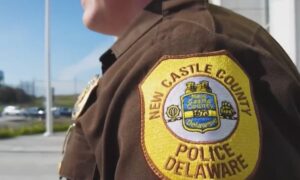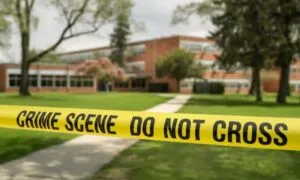St. Louis has long been celebrated for its rich history, iconic landmarks like the Gateway Arch, and a thriving cultural scene. However, behind the scenes, some neighborhoods face overwhelming challenges, grappling with issues like high crime rates, economic distress, and urban decay.
It’s a city of contrasts where beauty and hardship coexist. I’ve explored some of St. Louis’s hardest-hit areas, and it’s impossible not to feel both a deep sadness and a profound sense of hope when talking with people who call these neighborhoods home.
Neighborhoods such as Wells-Goodfellow and JeffVanderLou are well known for being among the most dangerous ones, but there are others that are also counted among the worst.
Here, we’ll explore ten of the most troubled neighborhoods in the city and the factors that contribute to their struggles.

Table of Contents
Toggle10. O’Fallon

The O’Fallon neighborhood, situated in North St. Louis, shares a name with a wealthier suburban counterpart but faces dramatically different circumstances.
Crime, especially violence, plagues the community, and the beautiful old architecture is overshadowed by economic difficulties and neglect. Many residents are frustrated by the lack of city services and the absence of meaningful investment.
Without attention, it’s hard to imagine O’Fallon escaping the cycle of poverty and crime.
- Total Crime (per 100,000 Residents): 813
Overall Crime Rate
According to St. Louis Crime Tracker, O’Fallon has an extremely high crime rate of 202.7 incidents per 1,000 residents annually.
This places it in the bottom 1% for safety in the U.S., meaning 99% of neighborhoods are considered safer.
Violent Crime
The violent crime rate is particularly alarming at 25.22 per 1,000 residents, which includes assaults (16.49 per 1,000), robberies (5.96), and murders (2.08).
Most violent crime occurs in the western and northern parts of the neighborhood, as per Crime Grade.
Property Crime
Crime Grade statistics also show that property crimes such as theft and burglary are even more frequent, with a property crime rate of 156.7 per 1,000 residents. Theft alone accounts for 126.5 per 1,000.
Encouraging January of 2025
As of January 2025, the O’Fallon neighborhood in St. Louis has experienced a significant decrease in crime rates, as per St. Louis Crime Tracker.
Over the past six months, total reported crime in O’Fallon has declined by 38.5% compared to the same period the previous year. The per-capita crime rate during this time is 24 incidents per 1,000 residents.
9. Carr Square
Carr Square is nestled near downtown, but proximity to the city’s heart hasn’t shielded it from the challenges of urban blight. With one of the highest poverty rates in the city, the neighborhood struggles with violent crime, particularly shootings and assaults.
Public housing units are common here, contributing to the concentration of poverty that affects so many aspects of life.
Walking through Carr Square, you can’t help but wonder why the neighborhood, sitting so close to downtown, hasn’t seen more of the benefits of development that other parts of the city have enjoyed.
- Total Crime (per 100,000 Residents): 2,884
Crime Rate Overview
Carr Square has some of the highest crime rates in St. Louis. The violent crime rate is estimated to be significantly higher than the city average, and property crimes are also a major issue.
According to AreaVibes, residents face a 1 in 12 chance of becoming a victim of crime in the area. This neighborhood is considered to be less safe compared to other parts of St. Louis.
Types of Crimes
Carr Square experiences both violent and property crimes at high rates. AreaVibes statistics also show that violent crimes such as assault, robbery, and homicide are prevalent, with violent crime rates of approximately 4,212 incidents per 100,000 people.
Property crimes, including theft and vehicle theft, also affect this neighborhood. Vehicle theft rates stand at around 2,549 per 100,000 people.
8. Hamilton Heights

Hamilton Heights, located in the northwestern part of the city, faces challenges that mirror those of other North St. Louis neighborhoods.
Abandoned homes and deteriorating infrastructure are common sights here, and the lack of economic development has contributed to a rise in crime, particularly violent incidents and drug-related offenses.
The neighborhood has a strong sense of community, but it’s tough to sustain that when daily life is marred by danger. Like so many neighborhoods on this list, Hamilton Heights is yearning for real investment and change.
- Total Crime (per 100,000 Residents): 9,951
Overall Crime Rate
Statistics show that Hamilton Heights has a crime rate that is 328% higher than the national average. The neighborhood experiences particularly high rates of violent crime, which are 654% higher than the national average.
Residents have a 1 in 11 chance of becoming a victim of any type of crime.
Violent Crimes
The violent crime rate in Hamilton Heights is alarmingly high, as per Niche stats, with incidents such as homicides, assaults, and robberies contributing to the statistic that residents face a 1 in 36 chance of becoming a victim of violent crime.
Property Crimes
In terms of property crimes, including theft, burglary, and vehicle theft, Hamilton Heights has significant challenges.
Statistics provided by AreaVibes show that the chance of being a victim of property crime is 1 in 14, with issues such as vehicle theft being particularly prevalent.
Early 2025 Statistics
Citywide data from the St. Louis Metropolitan Police Department indicates a general decrease in both violent and property crimes during January 2025 compared to January 2024.
Notably, homicides decreased by 55%, with nine incidents reported in January 2025, down from 20 in the same month the previous year.
Other violent crimes, such as rape and aggravated assault, also saw significant declines. Property crimes, including motor vehicle theft and burglary, experienced reductions as well.
7. Old North St. Louis

Old North St. Louis is a neighborhood of contradictions. Some parts have been revitalized and boast beautiful, renovated homes. But just a few blocks away, you’ll find abandoned properties, overgrown lots, and a palpable sense of despair.
The economic divide within Old North is striking, and it’s a neighborhood that could go in one of two directions: further decay or full-scale revitalization.
Some community-driven initiatives are working to create positive change, but without more investment, it remains to be seen which direction the neighborhood will ultimately take.
- Total Crime (per 100,000 Residents): 13,979
Crime Rates and Chances of Victimization
Old North St. Louis has a crime rate 501% higher than the national average, AreaVibes report. Violent crimes are notably high, at 689% above the national average.
Residents have a 1 in 8 chance of becoming a victim of any crime, including both violent and property crimes.
Per Capita Crime Rates
In 2022, Old North St. Louis recorded 514 total crimes, including one murder. PASS Security reported that this resulted in a crime rate of 345.43 per 1,000 residents.
Although the total number of crimes was similar to nearby neighborhoods, Old North reported fewer homicides compared to areas like Kingsway East.
Homicide Incidents
There was at least one notable homicide in Old North St. Louis in 2024. A shooting occurred on July 17, 2024, at 2009 Hebert Street, highlighting continued concerns over gun violence in the neighborhood, St. Louis Post-Dispatch Graphics show.
6. Fairground Neighborhood

Fairground Neighborhood is situated in North St. Louis, and while it’s home to the historic Fairground Park, the area surrounding it is in a steep decline. High levels of violent crime make this one of the more dangerous neighborhoods in the city.
Scarce economic opportunities, crumbling homes, and systemic issues have combined to keep Fairground locked in a state of decay. Despite history, the future remains uncertain. What will it take to bring life back to Fairground?
- Total Crime (per 100,000 Residents): 13,862
Overall Crime Rate
According to AreaVibes, the overall crime rate in Fairground Neighborhood is 496% higher than the national average.
This makes it one of the more dangerous areas in St. Louis, with violent crimes being 532% higher than the national average. Residents have a 1 in 8 chance of becoming a victim of crime in this neighborhood.
Homicides in 2024
The Fairground area has experienced multiple homicides in 2024. St. Louis Post-Dispatch graphics show the following:
- A shooting on August 5, 2024, in the 4300 block of North Florissant Avenue.
- A fatal shooting of Terrence Trotter on May 1, 2024, at North Grand Boulevard.
- Another shooting incident on January 8, 2024, in the 3700 block of Kossuth Avenue.
Property Crime Rates
Property crimes, including burglary, theft, and vehicle theft, are notably high in the Fairground Neighborhood. For example, statistics show the following:
- Burglary rates are 806 per 100,000 people, far higher than St. Louis’s overall rate.
- Theft and vehicle theft also far exceed city and national averages.
Violent Crime Incidents
Violent crime in Fairground includes a mix of assaults and shootings. The neighborhood experiences frequent incidents, with 1 in 43 residents expected to become victims of violent crime, as per AreaVibes.
In 2025 the Neighborhood Continues to Struggle With Crime
As of January 2025, the Fairground Neighborhood in St. Louis continues to experience significant challenges with crime. Although the crime is down, it’s still not a safe neighborhood.
According to data from the St. Louis Metropolitan Police Department, the area has a per-capita crime rate of 57.45 incidents per 1,000 residents over the past six months.
While the city of St. Louis has seen an overall decrease in crime, with a 15% reduction in 2024 compared to the previous year, the Fairground Neighborhood remains an area with elevated crime rates.
5. Gravois Park
Located in South St. Louis, Gravois Park is home to a diverse community that includes many immigrants and long-time residents alike. However, this diversity doesn’t shield the area from serious problems.
Violent crimes, including shootings and assaults, are far too common here. Poverty and housing instability also contribute to the neighborhood’s struggles, making it difficult for families to find a foothold.
There are community efforts underway, especially programs aimed at the neighborhood’s youth, which give hope for future improvement. But the path to change will take time, and it’s often hard to feel optimistic amid such challenges.
- Total Crime (per 100,000 Residents): 10,064
Overall Crime Rate
This neighborhood’s crime rate is 323% higher than the national average, PropertyClub stats show. Residents have about a 1 in 11 chance of becoming a victim of crime, making it one of the most dangerous neighborhoods in St. Louis.
Violent Crime
The violent crime rate in Gravois Park is 20.99 per 1,000 residents annually. Assaults make up the majority of these crimes at 16.18 per 1,000 residents.
Other violent crimes include robbery (4.12 per 1,000), rape (0.58 per 1,000), and murder (0.11 per 1,000), as per Crime Grade.
Property Crime
Crime Grade statistics also show that property crimes in Gravois Park are significant, with a rate of 37.89 per 1,000 residents.
Common property crimes include theft (14.61 per 1,000), vehicle theft (11.37 per 1,000), and burglary (11.67 per 1,000). These numbers suggest that property crime is a major issue in the neighborhood
Historical Context
Historically, Gravois Park has experienced higher crime rates compared to other St. Louis neighborhoods.
For instance, as NextStl reports, in 2017, crime in Gravois Park decreased by 16%, contributing to an overall 8.4% reduction in crime across the Cherokee neighborhoods.
4. The Ville

The Ville holds deep historical significance. It was once a vibrant African-American community, home to professionals, educators, and institutions that thrived during segregation.
Today, that history feels distant as the neighborhood battles overwhelming poverty and unemployment. With a large number of vacant homes and high crime rates, The Ville is struggling to maintain any sense of safety or community cohesion.
It’s tough to see such a proud neighborhood facing such an uphill battle, but there’s hope in the hearts of the people who remain committed to reviving it.
- Total Crime (per 100,000 Residents): 10,027
Crime Rate Overview
Statistics show that The Ville experiences notably high crime rates compared to national averages. In 2024, crime in The Ville is 331% higher than the national average.
Violent crime in the area is 634% higher than the U.S. average, with residents having a 1 in 10 chance of becoming a victim of any crime.
Violent Crime and Homicides
According to the St. Louis Metropolitan Police Department, violent crime remains a major concern in The Ville, with assaults and shootings frequently reported.
St. Louis overall has seen a general decrease in violent crime, including a 40% drop in homicides since 2020, but The Ville remains a hot spot for violent incidents, with a 1 in 37 chance of being a victim of violent crime.
Property Crime
Property crimes, including theft and vehicle break-ins, are also prevalent in The Ville, as per AreaVibes.
In 2024, property crimes such as burglary and vehicle theft contribute to a high crime rate, with the neighborhood registering 2,549 vehicle thefts per 100,000 residents and other thefts at 3,898 per 100,000.
Crime Trends in St. Louis
St. Louis Metropolitan Police Department also reported that, citywide, St. Louis has seen a slight improvement in overall crime, with violent crime down 2.2% and property crime down 12.6% between 2023 and 2024.
Despite these improvements, The Ville continues to experience elevated crime levels.
3. Hyde Park

Hyde Park has a storied history, once a bustling industrial area that helped drive the city’s economy. But like so many industrial areas across the U.S., when factories shut down, the jobs disappeared.
Today, the neighborhood suffers from high levels of property crime and burglaries. Drug trafficking is also an ongoing issue, which only adds to the sense of danger that permeates daily life.
The empty streets and aging infrastructure are sobering reminders of the long road ahead for Hyde Park. It’s a place that needs investment—both financial and community-driven—to turn things around.
- Total Crime (per 100,000 Residents): 12,970
Overall Crime Rate
Crime in Hyde Park is significantly higher than the national average, St. Louis Metropolitan Police Department reports. The overall crime rate is 458% above the U.S. average.
Violent crimes, in particular, are 589% higher, giving residents a 1 in 8 chance of becoming a victim of crime, which makes it one of the less safe neighborhoods in the area
Violent Crime
Violent crime, including assaults and shootings, is a serious concern in Hyde Park. The neighborhood is experiencing an increasing rate of aggravated assaults and shootings, which are factored into the violent crime statistics.
The chances of being a victim of violent crime are 1 in 40, according to statistics.
Property Crime
Property crimes such as burglary and vehicle theft are also prevalent. For example, theft rates in Hyde Park are about 3,897 per 100,000 people, far exceeding both state and national averages, as shown by AreaVibes statistics.
2. JeffVanderLou
JeffVanderLou, also part of North St. Louis, struggles with similar challenges. Poverty is widespread, and the lack of business investment only deepens the economic stagnation.
You’ll see abandoned homes everywhere, often boarded up, their once beautiful facades now crumbling. It’s a stark reminder of the economic neglect that permeates this neighborhood.
Although there are some efforts underway to revive JeffVanderLou, progress feels painfully slow. You can sense the frustration from residents who just want a safer, more stable place to call home.
- Total Crime (per 100,000 Residents): 10,564
Crime Rate Comparison
The overall crime rate in JeffVanderLou is significantly higher than national averages, statistics show.
Violent crimes in this neighborhood are 579% higher than the national average, with residents facing a 1 in 10 chance of becoming victims of any type of crime.
Violent Crime Statistics
The violent crime rate in JeffVanderLou is 33.15 incidents per 1,000 residents annually, as per Crime Grade.
The breakdown includes assaults, robberies, rapes, and murders. Notably, assault incidents make up the largest portion of these crimes.
Property Crime
Property crime in JeffVanderLou is also notably high, with vehicle thefts and burglaries being common.
According to stats, the neighborhood’s property crime rate stands at 38.33 per 1,000 residents over the past six months, which exceeds that of many surrounding neighborhoods.
1. Wells-Goodfellow – The Most Dangerous Neighborhood in St. Louis
Wells-Goodfellow, located in the northwestern part of St. Louis, often tops the list of the city’s most dangerous areas. It’s not hard to see why.
Abandoned buildings and derelict homes pepper the landscape, painting a picture of a place long neglected. Many residents struggle with poverty, and the lack of economic opportunities fuels rampant crime, from property theft to violent offenses.
This neighborhood has been hit particularly hard by gang violence and drug-related activity. It’s heartbreaking to see a place with such a vibrant past now grappling with daily dangers that affect everyone, especially the kids growing up there.
- Total Crime (per 100,000 Residents): 12,265
Violent Crime Rate
Wells-Goodfellow is one of the least safe neighborhoods in St. Louis, ranking in the 1st percentile for safety, meaning that 99% of U.S. neighborhoods are safer, according to Crime Grade.
The violent crime rate is particularly concerning, with 25.44 incidents per 1,000 residents annually. Assaults are the most common violent crime, followed by robbery and murder.
Residents in the northern part of the neighborhood are more vulnerable, with a 1 in 33 chance of becoming a victim of violent crime.
Property Crime
According to AreaVibes, property crime is also significantly high in Wells-Goodfellow, with a rate of 7,254 incidents per 100,000 people, which is 428% higher than the national average.
Theft and vehicle theft are major contributors, with rates of 3,897.9 and 2,549.9 incidents per 100,000 residents, respectively.
Safety Ranking
Wells-Goodfellow ranks as one of the most dangerous neighborhoods not only in St. Louis but also in the state of Missouri.
It has consistently received an “F” grade for safety on AreaVibes due to its high rates of violent crime, making it an area of significant concern for residents and law enforcement.
Early 2025 Incidents
As of early 2025, the Wells-Goodfellow neighborhood in St. Louis continues to face significant crime challenges.
According to St. Louis Metropolitan Police, recent incidents include a robbery at a motel on January 27, 2025, in the 3600 block of Hamilton, where three suspects were arrested.
Additionally, on January 24, 2025, a 40-year-old man was shot during an argument in the 1600 block of Hamilton.
Why Are These Neighborhoods Struggling?

The problems facing these neighborhoods didn’t emerge overnight. Several factors contribute to the ongoing struggles:
- Systemic Racism: Historic redlining and discriminatory housing practices prevented many residents, especially Black families, from accumulating wealth through property ownership.
- Economic Disinvestment: The loss of manufacturing jobs hit North St. Louis particularly hard, and decades of neglect have led to crumbling infrastructure and high unemployment rates.
- Urban Flight: As more affluent residents moved to the suburbs, the city lost much of its tax base, further exacerbating the issues in poorer neighborhoods.
Final Thoughts
St. Louis, like many cities, faces a tale of two cities—one of opportunity and growth, the other of struggle and despair. The neighborhoods discussed here are on the front lines of the fight for a better future.
People here are resilient, but they can’t do it alone. Real progress will take time, but with continued investment and support from the city and its people, there’s hope that St. Louis’s most troubled neighborhoods can become places of pride once again.
Let’s hope that brighter days are on the horizon for the many who call these areas home.
References
- graphics.stltoday.com – St. Louis Crime Tracker: O’Fallon
- graphics.stltoday.com – Homicide Tracker
- crimegrade.org – The Safest and Most Dangerous Places in St. Luis, MO
- areavibes.com – St. Louis, MO Crime Rates
- niche.com – St. Louis Crime
- passsecurity.com – St. Louis Crime Map – Safest & Worst Neighborhoods 2024
- propertyclub.nyc – Most Dangerous Neighborhoods in St. Louis
Related Posts:
- 26 Most Dangerous Cities in US - Updated Statistics for 2025
- America's Murder Capitals: A 2025 Ranking of the…
- Safest Countries in the World in 2025 - GPI…
- Capital Cities in Europe: Top Destinations For You…
- Top 20 Most Dangerous Cities in California for 2025…
- Most Dangerous Cities in Georgia for 2025 - 10…








